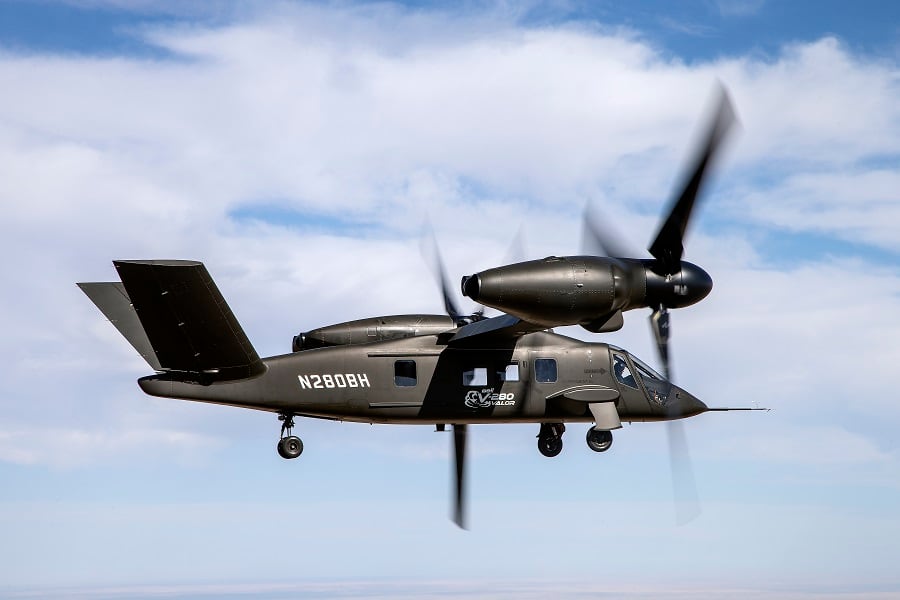Modular Open System Architecture, or MOSA, has long been a principal design consideration in the private sector but has not historically been a major focus in defense acquisition. This is changing as the bipartisan National Defense Strategy refocuses the Department of Defense on technologically advanced competitors such as China, a major change following decades of focus against smaller — and less technologically advanced — asymmetric threats.
A 2023 report found that China develops and fields capabilities as much as five to six times faster than the U.S. To maintain its fighting advantage, the U.S. needs to field new capabilities faster, with more cost effectiveness and with the flexibility to modify a system once fielded.
The NDS identifies MOSA as an essential tool for achieving this transformation. One key reason is that MOSA reduces capability development and upgrade timelines. Moore’s Law — the prediction that the number of transistors on a microchip doubles every two years — is one of the most striking examples of how the pace of technological change continues to increase.
Digital engineering in design, development and testing, coupled with advanced manufacturing in production, is another prominent factor. This increasing rate of technological advancement, combined with China’s speed and agility, means that the traditional defense acquisition system of slow, serial processes leading to decades long product development cycles followed by even longer deployment cycles no longer meets mission needs.
This traditional system focuses on tightly integrated or closed systems with connections — including software interfaces — between parts of a platform, e.g., radar, fire control, computers, etc., that are custom-designed and unique to the platform, with the intellectual property behind that integration owned by original manufacturer. In contrast, MOSA uses standardized connections between major parts of a system that allows users to easily remove and replace major components, subsystems and software. This allows regular technological upgrades of specific components without wholesales change to the platform.
With MOSA, rather than building a “perfect” closed system, the U.S. can field “good enough” systems and build them up later with rapid and agile technology upgrades. Traditional, closed systems have to be upgraded as a whole, forcing DOD to wait for major upgrades. With MOSA, the Pentagon can incrementally and continually upgrade weapons systems at the pace of technological advancement.
Plug and play
The civilian sector has been doing this for years, e.g., laptop computers and mobile phones. MOSA allows DOD to field a capability with technology that is ready today, then upgrade with a “plug-and-play” approach as new technology becomes mature without having to replace the entire system.
A second key reason why MOSA is essential is that it broadens the available supplier base initially and, more importantly, throughout the life-cycle of the system. In the traditional, closed process, once a selection has been made for a system among the competing developers the winner becomes an effective monopoly for the rest of the system’s life.
For tightly integrated systems, technological upgrades are sole sourced and require replacement of entire systems. With MOSA architecture, upgrades can be conducted for specific components and sourced competitively from any manufacturer that produces to the interface standards.
A third key reason is that MOSA reduces life cycle costs. The upfront costs of developing a system with open architecture can be higher, but the overall life cycle cost is lower. The plug-and-play functionality of MOSA allows upgrading systems incrementally and selectively (individual components versus the entire system). It also allows for competition in these upgrades, instead of sole source awards to the original manufacturer.
The Pentagon is now embracing MOSA and real progress is being made. In the Army, MOSA requirements were important considerations in selecting the XM30 Mechanized Infantry Combat Vehicle and the Future Long-Range Assault Aircraft. The Air Force has stated the Next Generation Air Dominance Program will be a “Fully Open System of Systems Architecture.” In the Navy, systems like the Air and Missile Defense Radar are being procured using Open Systems.
This is just the tip of the iceberg. Within a decade, it is expected that MOSA will be the dominant architecture for capabilities.
To cement these gains and continue progress, we recommend the following:
— The Under Secretary of Defense for Acquisition and Sustainment and Military Departments codify and enforce acceptable open systems architecture standards applicable to all of DOD.
— Establish policy that all systems entering milestone B or are approved for Middle Tier of Acquisition will require the use of open systems architecture or a waiver justifying an exception.
— The DoD Chief Information Officer and Military Departments develop and operate an open systems test bed to allow continued evolution of Open Systems best practices.
MOSA is an essential element of implementing the NDS and maintaining our technological edge over advanced adversaries like China and Russia. The initial steps have been taken and real progress is being made. t is now time to make the full shift in DOD to open systems.
Al Shaffer served as the first Principal Deputy Under Secretary of Defense for Acquisition and Sustainment. John Whitley served as Assistant Secretary of the Army for Financial Management and Comptroller and as the Acting Secretary of the Army. Both are advisers to Pacific Defense, a developer of MOSA technology that recently won the Army’s C4ISR/Electronic Warfare Modular Open Suite of Standards, or CMOSS, contract. The views expressed here are theirs alone.







